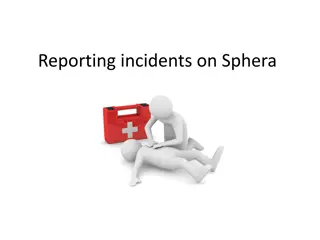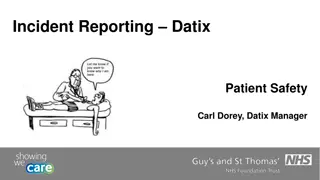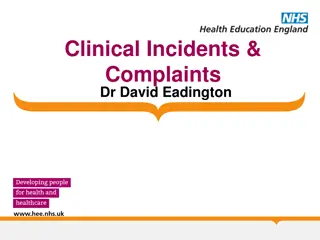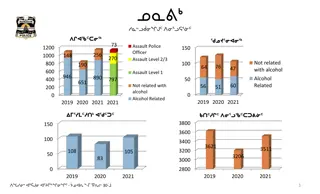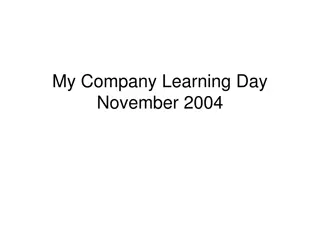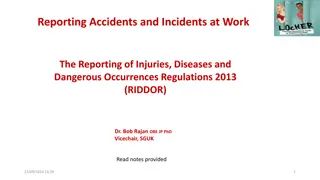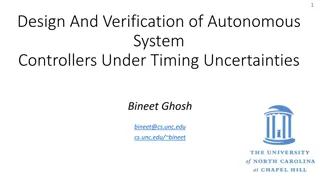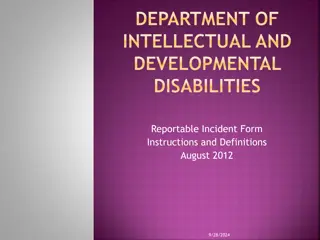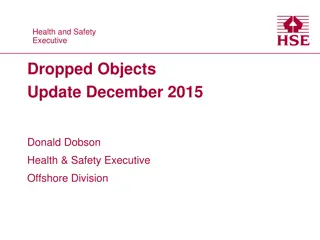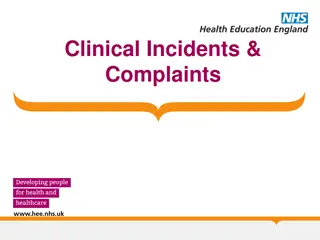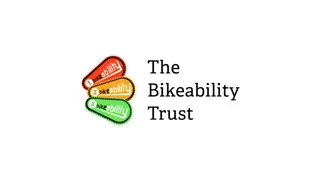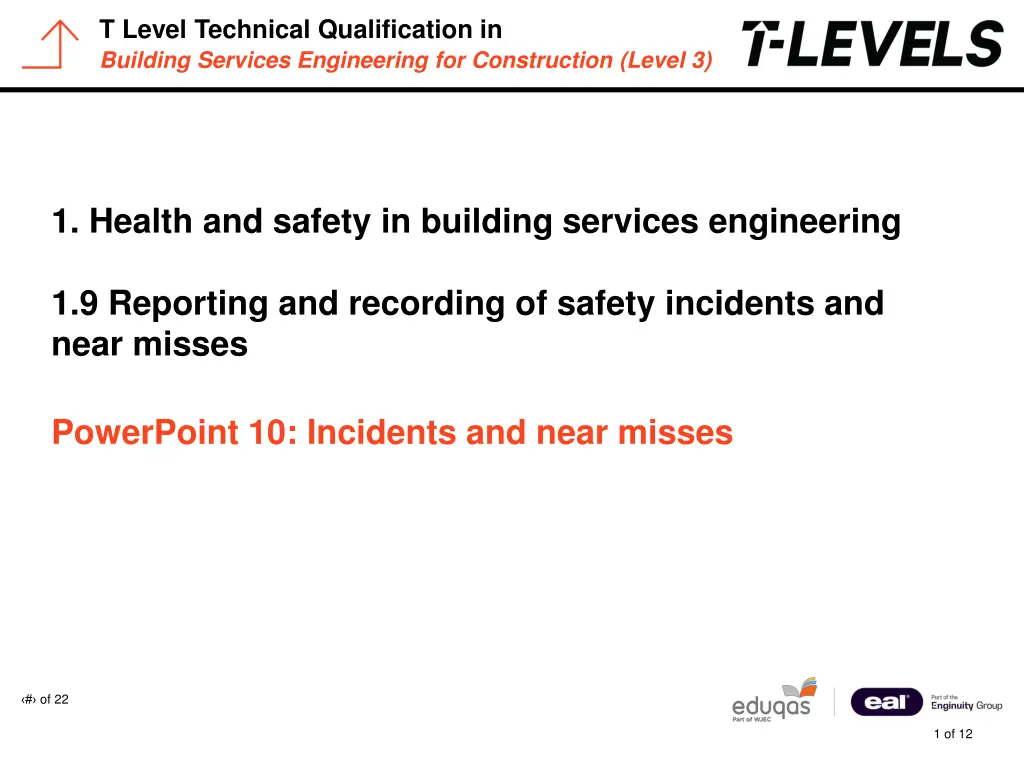
Accident Reporting in Building Services Engineering
Learn about the importance of accident reporting in building services engineering, including the procedures for recording accidents, reporting policies, and requirements for incidents that must be reported to the HSE. Understand the key details needed in accident books and the guidance provided by accident reporting policies in various scenarios.
Download Presentation

Please find below an Image/Link to download the presentation.
The content on the website is provided AS IS for your information and personal use only. It may not be sold, licensed, or shared on other websites without obtaining consent from the author. If you encounter any issues during the download, it is possible that the publisher has removed the file from their server.
You are allowed to download the files provided on this website for personal or commercial use, subject to the condition that they are used lawfully. All files are the property of their respective owners.
The content on the website is provided AS IS for your information and personal use only. It may not be sold, licensed, or shared on other websites without obtaining consent from the author.
E N D
Presentation Transcript
T Level Technical Qualification in Building Services Engineering for Construction (Level 3) 1. Health and safety in building services engineering PowerPoint presentation 1.9 Reporting and recording of safety incidents and near misses PowerPoint 10: Incidents and near misses # of 22 1 of 12
T Level Technical Qualification in Building Services Engineering for Construction (Level 3) Objectives By the end of the session learners should be able to: explain the correct procedure for recording an accident in an accident book explain what an accident reporting policy is understand the requirements for reporting RIDDOR incidents. # of 22 2 of 12
T Level Technical Qualification in Building Services Engineering for Construction (Level 3) Accident reporting All accidents on a construction site or in your place of work must be recorded in an accident book. This is a requirement of the Health and Safety at Work Act (HASAWA) 1974. Usually the site manager/foreman or your employer will be in charge of the accident book and of completing it correctly. The following details are required as a minimum: name, address and occupation of injured person dated signature, address and occupation of the person making the entry brief description of the accident, cause and what injury occurred whether the accident needs to be reported to the Health and Safety Executive (HSE). # of 22 3 of 12
T Level Technical Qualification in Building Services Engineering for Construction (Level 3) Accident Reporting Many companies have an accident reporting policy which provides guidance and timelines on how and when to report an accident. For example, what are the procedures for someone who suffers a minor injury, such as a small cut, as opposed to someone who suffers a major injury, such as a broken leg and has to have significant time off work? The accident reporting policy also provides guidance on near misses and other potential hazard reporting. # of 22 4 of 12
T Level Technical Qualification in Building Services Engineering for Construction (Level 3) Accidents that must be reported to the HSE There are some accidents that must be reported to the HSE for monitoring purposes or to aid in any investigation of the accident. The HSE will, if required by law, complete such an investigation. You/your employer must report: all accidents that cause death or major injury to an employee or member of the public any major injury (defined as certain fractures, amputations, loss of sight or anything that requires hospital treatment for more than 24 hours). # of 22 5 of 12
T Level Technical Qualification in Building Services Engineering for Construction (Level 3) Accident investigation All accidents that occur in the workplace, whether fatal or otherwise, must be investigated to prevent them happening again. The following people may be involved in an investigation: the employer an investigator from an insurance company, acting on behalf of the employer or employee a safety representative, usually from a trade union a health and safety inspector from the local authority or the HSE. # of 22 6 of 12
T Level Technical Qualification in Building Services Engineering for Construction (Level 3) RIDDOR The Reporting of Injuries, Diseases and Dangerous Occurrences Regulations (RIDDOR) 2013 apply to all work activities. The regulations place a legal duty on an employer in control of work premises to report certain work-related incidents, diseases and dangerous occurrences. RIDDOR applies to all work activities, however, not all incidents are reportable. # of 22 7 of 12
T Level Technical Qualification in Building Services Engineering for Construction (Level 3) RIDDOR reportable incidents Death. Major injury. Where an employee or self-employed person is away from work or unable to perform their normal work activities for more than 3 consecutive days due to the injury. Injuries to members of the public or people not at work, where they are taken from the scene of an accident to hospital. Certain work-related diseases. Dangerous occurrences where something happens that does not result in an injury but may have done. # of 22 8 of 12
T Level Technical Qualification in Building Services Engineering for Construction (Level 3) RIDDOR reportable incidents In addition: Gas Safe registered gas engineers must report any dangerous gas installations/fittings they encounter gas transporters/suppliers must report flammable gas incidents. # of 22 9 of 12
T Level Technical Qualification in Building Services Engineering for Construction (Level 3) Accidents and near misses The definition of an accident is: An incident that happens unexpectedly and unintentionally resulting in damage or injury to something or someone. The definition of a near miss is. A near miss is an unplanned event that has the potential to cause but does not actually result in damage or injury to something or someone. However, both above occurrences should be recorded in order to bring about a learning culture. # of 22 10 of 12
T Level Technical Qualification in Building Services Engineering for Construction (Level 3) Near misses A near miss can be defined as an unplanned/unwanted event that did not cause harm but had the potential to cause injury, ill health or property damage. The Health and Safety Executive (HSE) includes dangerous occurrences as near misses. Near misses are discussed at safety committees in order to stop incidents becoming accidents. The following are examples of near misses: slip or a trip in the workshop narrow escape: something falls from above and nearly hits you nearly falling from a damaged ladder nearly tripping over a coiled extension lead on the floor. # of 22 11 of 12
T Level Technical Qualification in Building Services Engineering for Construction (Level 3) Any questions? # of 22 12 of 12


